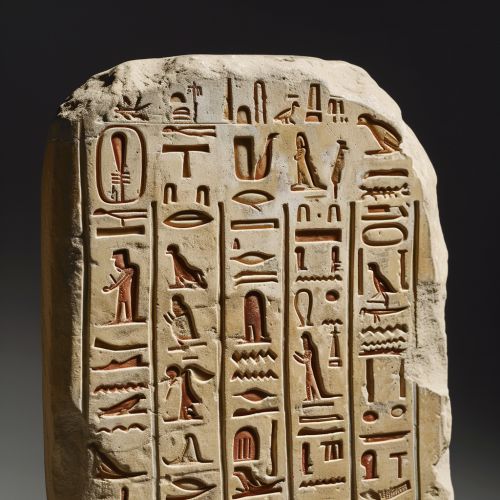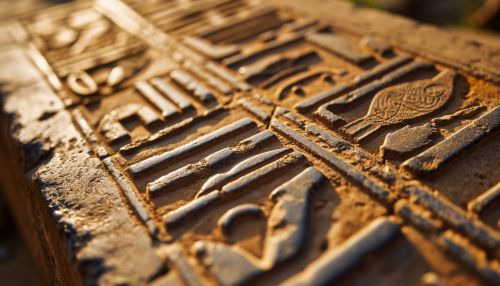Egyptian Language
Introduction
The Egyptian language is one of the earliest languages to be recorded in the world. It was spoken in ancient Egypt and was a branch of the Afro-Asiatic language family. The earliest known complete sentence in the Egyptian language has been dated to around 2690 BC, making it one of the oldest recorded languages known, along with Sumerian.


History
The Egyptian language was used for over 4000 years, making it one of the longest surviving languages in history. It evolved over time, with significant changes in its structure and vocabulary. The language's history is usually divided into five periods: Old Egyptian, Middle Egyptian, Late Egyptian, Demotic, and Coptic.
Old Egyptian
Old Egyptian was the form of the language used in the third millennium BC. It is known from funerary inscriptions, autobiographical texts, and royal annals. The Pyramid Texts, a collection of ancient Egyptian religious texts from the time of the Old Kingdom, are the oldest known religious texts in the world and provide valuable insights into the language of this period.
Middle Egyptian
Middle Egyptian, used from 2000 to 1350 BC, is the classical phase of the language. It is the language of a large body of literature, including the Story of Sinuhe, a narrative set in the aftermath of the death of Pharaoh Amenemhat I, and the Instructions of Amenemhat, a didactic text purportedly of advice given by the deceased king to his son.
Late Egyptian
Late Egyptian was used from the New Kingdom (1550–1069 BC) to the late Twelfth Dynasty. The language underwent significant changes in grammar and vocabulary. It is the language of the Ramesside Period, named after the eleven pharaohs that took the name of Ramesses.
Demotic
Demotic was the script and stage of the Egyptian language used from the late eighth century BC to the fifth century AD. It is written in a script derived from northern forms of hieratic used in the Nile Delta.
Coptic
Coptic is the final stage of the Egyptian language, used from the fourth to fourteenth century AD. It is the stage of the language used by the Coptic Orthodox Church and is written in the Greek alphabet, supplemented by seven signs from the demotic script to represent Egyptian sounds not present in Greek.
Grammar
Egyptian grammar is quite distinct from that of English and other Indo-European languages. It is characterized by a complex system of nominal and verbal morphology, including the use of infixes, suffixes, and prefixes, as well as a rich system of particles.
Writing System
The Egyptian language was written using a complex system of hieroglyphs, which were used for religious literature on papyrus and wood. The more cursive forms of hieroglyphs, known as hieratic and demotic, were used in both administrative and literary texts.
Modern Study
The study of the Egyptian language has had a profound impact on the fields of linguistics, Egyptology, and the study of Afro-Asiatic languages. The decipherment of the Rosetta Stone in the 19th century was a key event in the understanding of the Egyptian language and hieroglyphic script.
